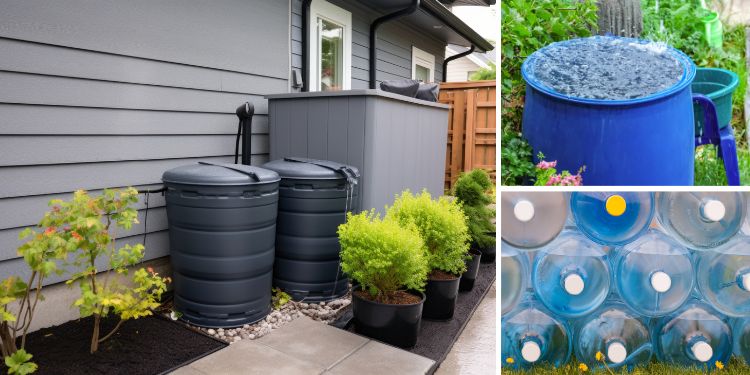Stockpiling plenty of water in preparation for a grid down disaster where the water quits running is crucial.
But there’s just one problem: your water stockpile is only good for as long as it lasts.
If your stockpile runs out and the grid is still down, what will you do then?
This is why you can’t consider yourself truly prepared when it comes to water no matter how much of it you have stockpiled.
There are two more vital skills that you need to learn in regards to water as well. These are:
Obtaining Water in a Crisis
You don’t just need to stockpile plenty of water, you also need to know how to collect more of it! The key is you want to have a replenishable source of water that ideally can continuously generate water for you. Three ways you can accomplish this are:
Rainwater Harvesting
Setting up a rainwater harvesting system is a lot easier than you may think.
All you really need is clean gutters and for downspouts to direct the water from rainfall down into food-grade water buckets at the bottom of your home.
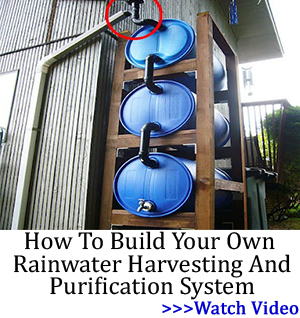 To give you an idea of how much rainwater you can expect to harvest, you can apply this formula: 1 inch of rain x 1 square foot = 0.62 gallons.
To give you an idea of how much rainwater you can expect to harvest, you can apply this formula: 1 inch of rain x 1 square foot = 0.62 gallons.
So, if you have a thousand square foot roof with which to capture rainwater, just one inch of rainfall can offer you up to 620 gallons.
That’s a lot of water, and it just goes to show why not setting up a rainwater harvesting system can be a huge missed opportunity.
Fog Catchers
Fog catchers are innovative devices designed to capture water droplets from fog and convert them into usable liquid water. It’s a good choice if you live anywhere that receives a lot of fog, such as high up in the mountains or near the coasts.
A fog catcher typically consists of vertical mesh panels or nets. As fog drifts through the mesh panels, water droplets become trapped and accumulate on the surface of the material. Gravity then causes the collected water to drip down into collection troughs or channels at the bottom of the nets, where you can collect it.
DIY Water Wells
If your property permits it, you should strongly consider digging a DIY water well to access groundwater on your property as well.
A well is simply one of the most reliable sources of water harvesting there is. While professional wells can be very expensive to dig, DIY water well kits provide you with a much cheaper option.
Related: Read This Before Stockpiling Water in Blue Barrels
Basically, you just need to excavate a hole around 20 to 25 feet deep into the ground where you can access groundwater, and then install a casing to prevent the well from collapsing over itself.
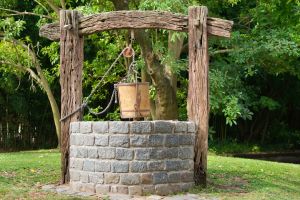
Then you’ll need to place a PVC pipe into the hole with a screen assembly at the bottom of the pipe that can filter though the water, and you can use pea gravel to fill the gaps in between the PVC pipe and the casing. Then you’ll need to install a cap assembly and pump handle over the PVC pipe to bring the water to the surface.
Atmospheric Water Generators
Atmospheric water generator devices, or AWGs, are devices that are designed to extract moisture from the air. Most AWG devices will draw in the water vapor from the air, use the process of condensation to turn it into a liquid, and then filter out the impurities before collecting it in a storage compartment.
AWGs are a great way to collect water if other water collection methods are not ideal. For example, they’re a great device to get if you live in an apartment or a condo where digging a water well or setting up a rainwater catchment system are simply not feasible.
Learning About Water Filtration and Purification
Drinking water that’s contaminated with bacteria or harmful substances can be more dangerous than not drinking any water at all.
That’s why you should take action to treat all water that you collect and harvest without exception.
Boiling
Boiling is perhaps the oldest water purification method there is, and it remains one of the simplest methods to this day.
To boil water, all you need is a container made out of a heat-resistant material. Fill the container with water, and then bring the water to a boil over a fire. Make sure that the water is boiling for a minimum of one minute before pulling it from the fire.
Filtration
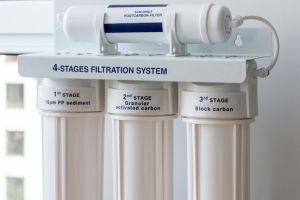
Boiling is great for removing harmful bacteria that you can’t see, but it won’t get rid of the visibly offensive substances that you can see.
This is why you should combine boiling with filtration to make sure that the water you collect is absolutely safe to drink.
Two of the most common water filtration methods are:
Activated Carbon Filters
Activated carbon filters are porous and absorbent. They are most effective at removing impurities such as chlorine, volatile organic compounds (VOCs), and certain chemicals from water. You’ll usually find activated carbon filters used in pitcher filters, faucet-mounted filters, and under-sink filtration systems.
Ceramic Filters
Ceramic filters are made from porous ceramic material that trap sediment, bacteria, and other particles as water passes through. They are most commonly used in gravity filters and survival portable filtration devices for outdoor use.
If you want to make sure the water you’re using for your and you family is safe to drink, it’s best to filter it yourself. You can learn here a cheap and easy way to create an ingenious rainwater harvesting and purification system capable of storing 165 gallons of water.
UV Light Water Purifiers
UV water purifiers utilize ultraviolet light technology to effectively disinfect water by destroying microorganisms and bacteria. When water passes through a UV water purifier, it is exposed to UV light with a specific wavelength. This wavelength penetrates the cell walls of pathogens, which stops them from reproducing and causing infections.
UV water purifiers do not remove physical particles or dissolved contaminants from water. That’s why, like boiling, you should also use them in conjunction with filtering.
In short, making yourself truly prepared when it comes to water during a disaster means you need to accomplish three things:
- You need a strong stockpile of water.
- You need a means to harvest more water to replenish your stockpile.
- You need to know how to purify new water that you collect.
If all three of these things are not in order, you have work to do.
You may also like:
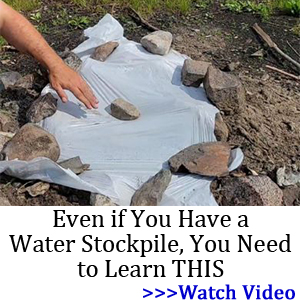 10 Killer Trees You Should Never Have in Your Backyard
10 Killer Trees You Should Never Have in Your Backyard
The Only Way to Hide Your Water Supply When SHTF (Video)
What Is the Closest Power Plant to Your Home? Are You Living in the High-Risk Zone?
8 “Long Shelf Life” Foods That Will Actually Go Bad Faster Than You Think
It’s Already Here
Read the full article here
